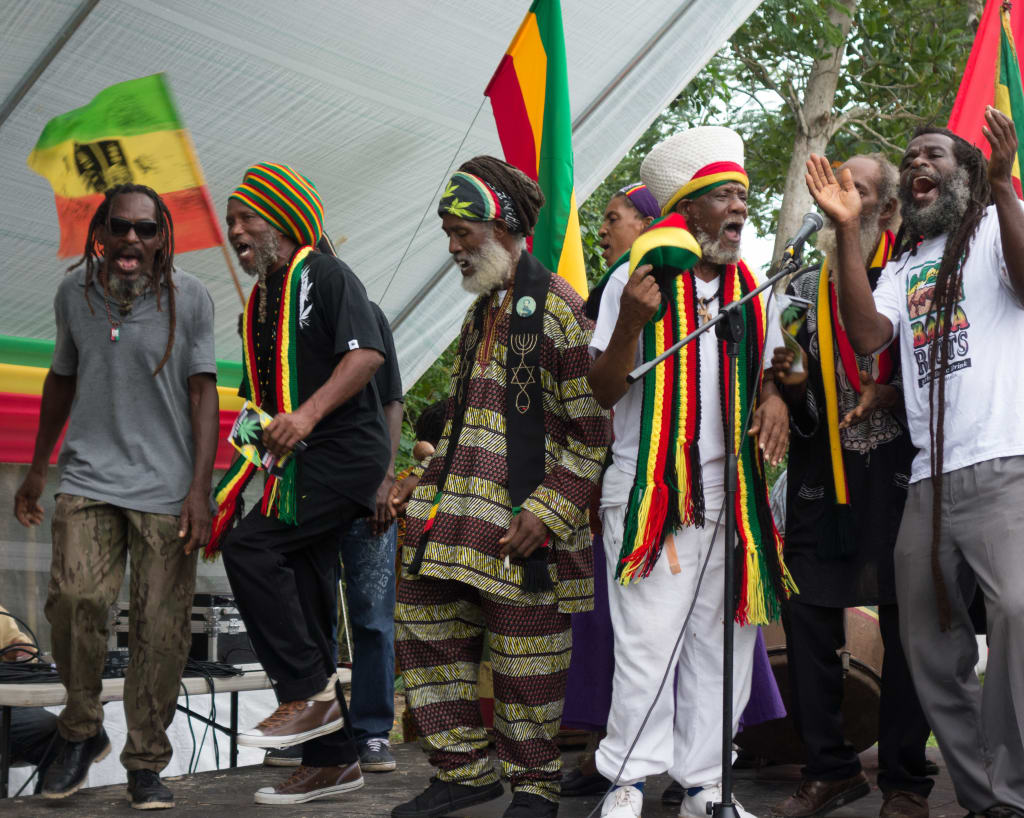Rastafarian Clothes: A Love Letter to Island Fashion
Get Your Jammin' Style On: A Groovy Tribute to Rastafarian Fashion!

Rastafarian culture is a way of life that originated in Jamaica in the 1930s. It is centered around the belief in the divinity of Emperor Haile Selassie I of Ethiopia and a rejection of Western societal norms. One of the ways that Rastafarian culture has influenced the world is through its unique fashion style.
Rastafarian clothes are characterized by their bright colors, bold patterns, and relaxed fit. They are a way to express cultural identity and individuality while also rejecting the constraints of mainstream fashion. In this article, we will explore the history and significance of Rastafarian clothes and why they should be a part of your wardrobe. Whether you’re looking to add some vibrancy to your closet or to express your appreciation for island culture, Rastafarian clothes have something to offer. Join us on this journey as we dive into the beauty and importance of Rastafarian fashion.
History of Rastafarian Clothes
The Rastafari movement emerged in Jamaica in the 1930s, as a response to the country’s colonial past and ongoing societal inequalities. It was a movement that sought to reject Western values and instead embrace African culture and spirituality.
Rastafarian clothes evolved as a way for followers of the movement to express their cultural identity and individuality. They rejected the formal, European-inspired clothing of the colonial era and instead embraced a more relaxed and colorful style.
Key elements of Rastafarian clothes include bright colors such as red, green, and gold, which hold symbolic significance. Red represents the blood of African martyrs, green symbolizes the vegetation of Ethiopia, and gold represents the wealth of Africa. The colors are often displayed in the form of stripes, as seen in the iconic “Rasta stripes” pattern.
Another key element of Rastafarian clothes is the use of symbols such as the lion, which represents Haile Selassie I, and the Star of David, which symbolizes the connection between the Rastafari movement and Judaism.
Over time, Rastafarian clothes have become an important form of cultural expression and identity, not just for followers of the Rastafari movement, but also for people around the world who appreciate the vibrant style and cultural significance of the clothing. In the next section, we will explore the fashion and style of Rastafarian clothes in more detail.
Fashion and Style of Rastafarian Clothes
Rastafarian clothes are known for their distinct fashion and style, which are characterized by their bright colors, bold patterns, and relaxed fit. One of the most iconic elements of Rastafarian clothing is the headwrap, which is often worn by both men and women. The headwrap is a symbol of African culture and is also a practical accessory for protecting the hair from the sun and keeping it out of the face.
Baggy pants are another key element of Rastafarian clothing. These pants are loose-fitting and comfortable, and they often feature colorful patterns or stripes. They are a nod to the traditional African attire and provide freedom of movement.
In addition to headwraps and baggy pants, Rastafarian clothes often feature brightly colored shirts and jackets, often made from natural fibers such as cotton or linen. These clothes are designed for comfort and practicality in hot weather, while also expressing the wearer’s cultural identity and individuality.
Rastafarian clothes can be styled and accessorized in a variety of ways to suit different occasions. For a casual look, they can be paired with sandals or sneakers and minimal jewelry. For a more formal event, they can be dressed up with a blazer or tailored pants and paired with statement jewelry.
Benefits of Incorporating Rastafarian Clothes into Your Wardrobe
If you’re looking to add some color and vibrancy to your wardrobe, Rastafarian clothes are an excellent choice. The bright colors and bold patterns of Rastafarian clothes can help you stand out and make a statement with your fashion choices.
Incorporating Rastafarian clothes into your wardrobe can also help you express your individuality and appreciation for cultural diversity. By wearing clothes that have deep cultural and spiritual significance, you can show your respect and appreciation for the Rastafari movement and its message of unity and love.
Another benefit of Rastafarian clothes is their versatility. While they have a distinctive style, Rastafarian clothes can be incorporated into a range of fashion styles, from streetwear to bohemian to formal wear. For example, a Rastafarian headwrap can add a touch of color and flair to a simple white dress, or a pair of baggy Rastafarian pants can be paired with a tailored blazer for a more formal look.
In addition to their fashion and style benefits, Rastafarian clothes are often made from natural fibers such as cotton and linen, making them comfortable and breathable in warm weather. They also often feature loose, relaxed fits, providing comfort and ease of movement.
Shopping for Rastafarian Clothes
If you’re interested in incorporating Rastafarian clothes into your wardrobe, there are many places to find them both online and in-store. Some popular online retailers for Rastafarian clothes include Etsy, Amazon, and independent online stores that specialize in Rastafarian fashion. In-store, you may be able to find Rastafarian clothes at local boutiques or stores that specialize in cultural or spiritual fashion.
When shopping for Rastafarian clothes, it’s important to know your size and understand the materials used. Many Rastafarian clothes are handmade, so sizes may vary from what you’re used to. It’s a good idea to read product descriptions carefully and check size charts before making a purchase. Additionally, many Rastafarian clothes are made from natural fibers such as cotton and linen, so it’s important to read care instructions and understand how to care for the items properly.
When incorporating Rastafarian clothes into your existing wardrobe, consider starting with small accessories such as a headwrap or bracelet before diving into more statement pieces like a brightly colored shirt or baggy pants. This can help you get comfortable with the style and figure out how to incorporate it into your daily outfits. Pairing Rastafarian clothes with neutral pieces like denim or white t-shirts can help balance out the bold patterns and colors.
Conclusion
Incorporating Rastafarian clothing into your wardrobe can add a unique and meaningful element to your style. By embracing the bold colors, patterns, and symbols of Rastafarian fashion, you can express your individuality and cultural appreciation. Whether you’re dressing up for a special occasion or simply looking for a way to add some vibrancy to your everyday outfits, Rastafarian clothes offer a versatile and exciting fashion option.
In addition to the fashion benefits, incorporating Rastafarian clothes into your wardrobe can also show your support for the Rastafari movement and its message of unity and love. By supporting independent designers and cultural fashion, you can help preserve and celebrate the rich history and traditions of the Rastafari culture.
Overall, Rastafarian clothes deserve a place in your wardrobe for their unique style and cultural significance. Whether you’re already a fan of Rastafarian fashion or just discovering it for the first time, incorporating these clothes into your style can add a special touch to your wardrobe and help you express your individuality and appreciation for different cultures.
About the Creator
Enjoyed the story? Support the Creator.
Subscribe for free to receive all their stories in your feed. You could also pledge your support or give them a one-off tip, letting them know you appreciate their work.






Comments
There are no comments for this story
Be the first to respond and start the conversation.